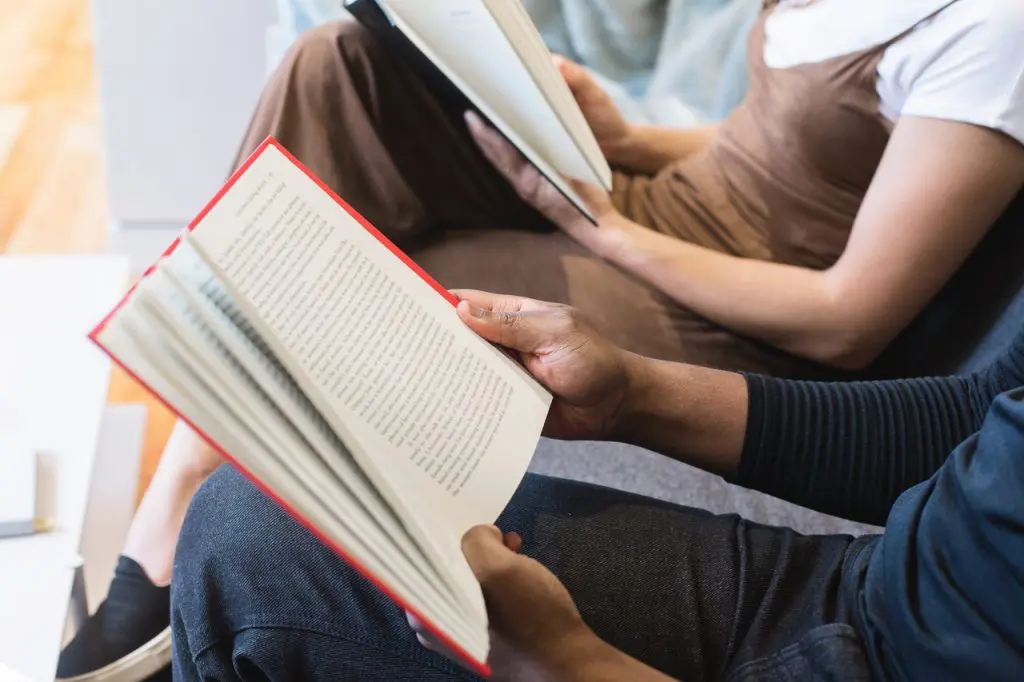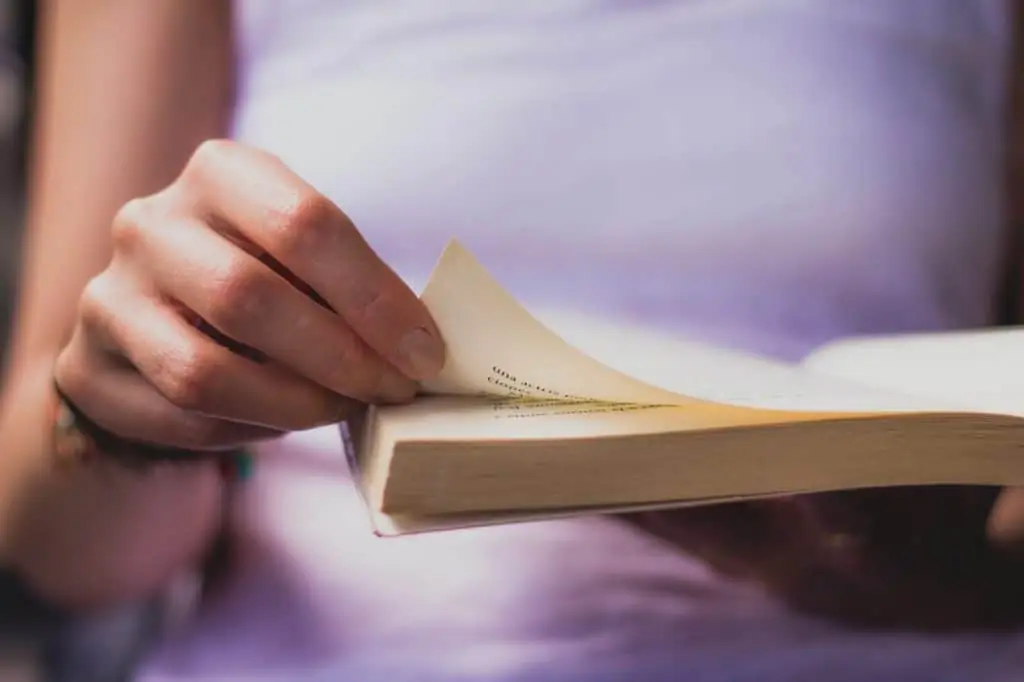Are you looking for a way to make yourself or your student a better independent reader? Are you struggling to find the deeper meaning in a variety of texts or passage? If you can answer yes to either of these questions, then you are in the right place. In this post, we’ll detail how to use close reading strategies.
Close reading is beneficial for all students and can be applied across an array of subjects. Imagine your students beginning to finally understand the literature homework that they have been struggling with for months. Instead of skimming the text, they decided to apply close reading techniques. Not only did they read the text several times, but they also began pulling out the things they didn’t understand. Therefore, they were ultimately able to find hidden value in its words. Anyone would love to have the ability to think critically and examine a passage with ease. This list makes it easy to do just that by providing the close reading definition, close reading examples, and even information on how to do a close reading. You only have one task, and that is to keep reading simply.
What is Close Reading?
When we look to define close reading, things can become tricky. However, we can think of close reading as one of the critical reading strategies which encourage continuously reading a text to allow for better comprehension. It entails readers engaging with the text by means of interpretation and observation. This can be done in many ways, including annotating text pulling out keywords and much more. It is a strategy which encompasses focused reading and evaluation. Close reading allows students to think about the characters, events, and problems in a story and use them to create graphic organizers and notes which help them better understand the text.
It’s important not to mistake close reading for things that it is not. Close reading is not meant to be done on full books or extremely long passages. Some examples of close reading passages include excerpts from texts or short stories where you are looking to derive the meaning behind the text. Close reading activities are not one hundred percent independent or one hundred percent teacher reliant. It is an integration of both elements to facilitate thought and discussion.
There are several benefits of close reading.
1. Increased dialogue and collaboration
When students understand the text and are analyzing the events of the story and the actions of characters, it encourages discussion and collaboration. It allows students the opportunity of defending their position to someone else who may not have the same viewpoint.
2. Increased comprehension
When kids can better understand what they have read, they are able to do better in class and on standardized exams. The close reading steps can be applied to a variety of texts and passages to allow for increased comprehension of what is being read.
3. Encourages critical thinking
Critical thinking allows students to interpret what they read to pull out the most vital information. This skill is vital for students to learn when reading but also because critical thinking is used in everyday life.
3 Close Reading Strategies to Know
4. Number your paragraphs.
Numbering your paragraphs is essential to refer to sections in your reading. This can be useful when having extensive classroom discussions or when you need to refer to the information in a specific area of the text. Chunking text is also excellent for full-page reading. Students can label chunks of texts if paragraphs are not an option. There is no right or wrong way to group text. No matter how it is grouped, you should be able to explain why it is arranged a certain way.
5. Go annotation crazy.
If you’re wondering how to annotate an article, underlining and circling is a fundamental strategy. Vocabulary is an essential part of understanding what you are reading. Changing the meaning of a word can mean changing the entire purpose of a passage. Circle words which are important or that you would like to research as well as. This will remind you to use the dictionary to find the meanings of these words to understand the passage better. The information you annotate will also lend itself to the purpose of the reading. You should be underlining with purpose. Use underlining to focus on a critical piece of information or question which you would like to answer. It may be helpful if your annotations answer several close reading questions.
6. Use your margins.
Using the margins is one of many great close reading strategies for high school students. Students can use the margins to write extra information about the text. For example, students can summarize sections or paragraphs within the margins. You can also use the margins to ask questions, draw conclusions, and use symbols to represent the text.
How to Use Close Reading Strategies and Techniques
7. Three-Step Method.
There are three steps that all students should perform when beginning close reading. These three necessary steps will help users become familiar with close reading until they become second nature. Though three steps are generally used, these can be elongated to make things simpler for close reading strategies for elementary-age children. The three steps, along with how to use them, are as follows.
– Understand: During the first read of your chosen text, you should be reading for understanding. This is step 1. You should be reading to understand the text on a surface level. This includes seeking to understand the main idea of the passage as well as summarizing the primary purpose of the reading. Within this step, you should also be highlighting the essential parts of the text and answering the why questions. Why questions simply include who, what and where.
– Interpret: During step two, you will want to read through the passage again. However, this time, when reading, you will want to be making annotated notes. You should be circling portions of the close reading passages which you do not understand and marking things which stand out to you. In this step, you will pay more attention to how the text is saying something or conveying a particular message. Therefore, vocabulary and syntax will be very important. After completing step two, you should be able to explain why the author wrote the text.
– Evaluate: Evaluation is the last step in the 3-step process. Within this step, you will be looking to determine why the text matters. This will be the third reading of the text. Students should be able to answer questions in relation to the text and support those answers with specific information from the text.
8. Everything does not require a close read.
It’s important to remember that every passage you read does not need to be read closely. When choosing a text, make sure that it is complex enough to elicit discussion and can not be summed up with a standard read. There should be some underlying meaning. The text should also require you or your students to utilize reading comprehension skills. Lastly, it should not be too long. You should not perform a close reading on a 200-page book. Instead, pick out portions of the book, which seem meaningful and beneficial for discussion.
9. Don’t forget the title.
Titles are an essential part of any text and generally have some meaning behind them. When performing a close reading, makes sure that you are not leaving them out. For example, would it make sense if the story of the 3 Little Pigs was called 3 Blind Mice? Titles can be important symbolism for the text. Make sure you think about their relationship when reading through your passage.
10. Pay attention to the point of view.
Perspective can drastically change the meaning of a piece of writing. You should know if the passage is first, second, or third-person view. This can be essential when looking at characters or events. The point of view could also change the judgment of a situation. For example, first-person stories can provide insight into what the main character is thinking and feeling; however, that may not be the same for the characters around them.
11. Watch for signs and symbols.
Symbolism is another item that you should be watching for as you read. Ask yourself if the imagery is present within the text and if so, attempt to figure out its meaning. For example, Harry Potter’s scar is a form of symbolism within the Harry Potter novels.
12. Don’t skip what you don’t know.
If anytime you are reading, you find keywords, events, or information that you do not understand do not skip it. Instead, make a note and after you have finished reading, go back and jot down the definitions for these items. Therefore, on your next run-through of the text, you will be able to read the sentence and interpret it based on the meaning of the words. You gain a higher value of what you read if you are aware of the implications of the words used.
13. Who is this author writing for?
The audience is also a large part of how the meaning of a passage can be interpreted. The same word choice and sentence structure used for a group of elementary school kids are not the same as it would be for a group of professionals.
14. Pay attention to the order of events.
When analyzing text, pay close attention to the timeline. How does time affect the span of events? You should also pay attention to the amount of time which elapses between events. Time can have a strong influence on events.
15. Characters are good to know.
When performing a close read of a short story, the role characters’ play can be essential to understanding the meaning behind a body of the text. For example, if the antagonist or the villain of a story is doing something which may seem friendly or helpful, it can be inferred that he or she may have ulterior motives in their actions. You will need to analyze how the information about the character influences the meaning in the text.
16. Look for patterns.
When close reading, attempt to identify trends in the text you are reading. A trend can be similarities in text or form. It can also be contradictions or repetitions within the document.
17. Question everything.
Not everyone will have the same interpretation of the text. While reading, ask questions on the page which may elicit discussion later. For example, if an author describes the sky as grey like smoke with a strange smell. Do not take this at face value. Asking questions surrounding why the sky is orange or why there is a peculiar smell in the air would be necessary when close reading. These questions can lead you to a variety of conclusions and other information in the passage. When reading through the text again, you may find the answer to your questions in another part of the text. Answer these questions in the margins to refer to during discussions.
Wrapping Up Close Reading Strategies
Close reading is a literary strategy which forces children and adults to do a continuous evaluation and dives deeper into the meaning behind a passage. It is one of the common core standards which children must learn to excel. Close reading is beneficial for not just reading but for thinking critically and improving one’s analytical skills. The tips listed above should not only help you understand what close reading is but also how to annotate a text while performing a close reading. These tips can be applied to several close reading passages.
Things like researching words or events you are unfamiliar with, highlighting key phrases and paying attention to the timeline are great ways to ensure you have a firm understanding of not only the surface level meaning of a passage but the more in-depth information. Close reading doesn’t have to be complicated. All you need to do is following the three steps – understand, interpret, and evaluate. Close reading is an activity that can make students fall in love with reading. It empowers students to ask questions and to read for understanding.
Did you find this helpful? Our blog includes tons of helpful study tips, you may find our tips on how to get motivated to study, how to ace a test, or how to study for exams helpful.
We also detail learner specific things like different visual learner study tips and ADHD study tips.
Make sure to also check out our ultimate guide to reading here.











